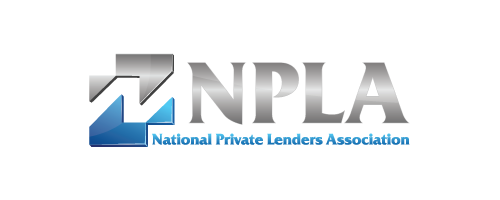Housing Market and Economy Update Q4 2023 – NPLA Meeting Recap

Authored by the GoDocs Team
At the most recent NPLA meeting, Rick Sharga, CEO of CJ Patrick Company, delivered a comprehensive Q4 2023 Market Update. His presentation covered valuable insights into the US economy, the housing market, delinquency and foreclosure trends, investor activity, and offered a glimpse into 2024.
Become a member of the NPLA to join the next meeting!
US Economy
Despite a somewhat pessimistic outlook, the GDP remains strong. Q3 saw a growth rate of almost 5%. The strong GDP was primarily driven by consumer spending during the summer, particularly on travel, vacations, and leisure activities. However, expectations for the 4th quarter are less optimistic, with soft and flat estimates. Consumer spending, while still strong, is showing signs of softening, which is a critical factor given that consumer spending contributes to about 2/3 of the GDP.
Employment and Wage Growth
Unemployment rates remain historically low, with 9.6 million job openings and 6 million job seekers. The unemployment rate stands at about 3.8%, well below historic averages. Wage growth has been strong and, for the first time in a while, has outpaced the inflation rate. This growth is particularly pronounced in lower-wage sectors, in contrast to 2020 when wage growth was concentrated in higher-wage jobs. Currently, the hourly wage rate across the country averages around $29-30.
Consumer Spending and Confidence
Consumer spending is still rising, but consumer confidence has lagged due to COVID-19, higher inflation rates, and global geopolitical tensions. The disconnect between rising consumer spending and lower consumer confidence is a cause for concern, as it could quickly reverse and lead to a substantial drop in consumer spending, potentially pushing the economy into a recession.
Credit Card Usage and Debt
Credit card usage has reached unprecedented levels, exceeding one trillion dollars in the last quarter. This surge might be attributed to households facing financial challenges. Households with lower and median incomes allocate a significant portion of their earnings to essential expenses like rent, mortgages, food, and gas, potentially necessitating credit card usage. And with the average credit card interest rate at nearly 25%, this poses financial risks for households.
Savings and Delinquencies
Savings rates dropped below normal levels, and on average, households now hold more credit card debt than savings. This financial ratio is considered unhealthy, and this distress has begun to manifest in credit delinquencies, particularly in consumer loans, credit cards, and auto loans. These delinquencies are at their highest levels in 13-14 years. Additionally, with student loan payments restarting in October, we may see an impact on consumer spending.
Inflation and the Federal Reserve
Inflation, which has possibly peaked, remains a concern, leading the Federal Reserve to maintain an aggressive stance. The Federal Reserve’s actions during the early stages of the COVID pandemic included lowering the fed funds rate to zero and purchasing mortgage securities to keep rates down. This, in turn, led to soaring inflation, which peaked at over 9%.
Housing Market
The housing market has been significantly influenced by Federal Reserve actions, particularly in the bond market, leading to a rise in mortgage rates. Mortgage rates have reached near 23-year highs, with the 30-year fixed rate standing around 7.5%. Such high rates have priced out many potential homebuyers, making it increasingly difficult for individuals to afford properties. Even the 15-year fixed rate has exceeded 7%.
This surge in mortgage rates has effectively priced out an additional 5 million households since rates started rising in 2021, bringing the total number of priced-out households to 28 million. However, for investors, there are opportunities in the rental market, and fix-and-flip investors face less competition in the housing market.
Mortgage Delinquencies
Mortgage delinquency rates currently stand at 3.17%, lower than historical averages of around 4-5%. This relative stability is attributed to most homeowners making their mortgage payments. Delinquency rates tend to correlate with unemployment rates, and at the current unemployment rate of 3.7-3.8%, a 3.17% delinquency rate makes sense. Notably, there is a higher number of early-stage delinquencies (30-60 days overdue), but at the 90-day mark, delinquencies tend to decrease as homeowners catch up on their payments. Mortgage delinquencies are closely tied to economic conditions, and any increase in unemployment is likely to lead to higher delinquency rates.
Foreclosure Rates
Foreclosure rates are still hovering at about 60% of pre-pandemic levels, with normally 1-1.5% of loans being in foreclosure. It is expected that foreclosure rates may return to more normal levels in the second half of 2024. Auction volume remains at 50% of pre-pandemic levels.
Many of these distressed homeowners are selling their properties early in the foreclosure process to protect their equity. This means fewer properties are reaching the auction stage, leaving lenders with fewer properties to repossess.
Rental Market
In the rental market, there has been a shift in the annualized rent growth. In 2022, we witnessed a remarkable 15% increase in asking rent, but now it has dropped to under 1%. This decline has made it less expensive to rent than to own, marking a significant reversal from when interest rates were lower. Rental property investors are presented with opportunities to explore, although it’s essential to consider local market conditions as these dynamics vary across regions.
Investor Activity
Investor activity in the housing market has remained robust, accounting for a significant 26% of home purchases. The majority of these investors tend to be smaller to mid-sized players rather than large institutions. Interestingly, institutional investors’ market share has declined, likely in anticipation of more favorable market conditions. In a positive turn, flipping activity has increased for the first time in three quarters, and gross profits on these transactions have increased as home prices stabilized, signaling some optimism in the real estate sector.
Closing
To wrap up the meeting, Sharga offered a summary of key takeaways. He reiterated that a recession in 2024 seems likely, following historical trends, but it is expected to be relatively short and mild. Economic factors, including increasing defaults, rising insurance rates, higher property taxes, and inflation, are potential contributors to this outlook. Sharga also emphasized that despite declining mortgage delinquency rates, there are early signs of distress in delinquencies on consumer loans.
The housing market is facing challenges due to high mortgage rates, but housing price crashes are not anticipated. He highlighted that new home sales are outpacing existing home sales, and rental markets are shifting due to demographic changes. Finally, investor activity remains strong, offering opportunities for those involved in the real estate market.
Author Bio:
GoDocs is an innovative leader in automated loan document generation, transforming the commercial lending process. With a fully cloud-based platform, GoDocs provides a flexible digital solution that makes commercial loans more cost-effective to document and faster to close, all while maintaining compliance in all 50 states. GoDocs is a Corporate Member of the NPLA.
